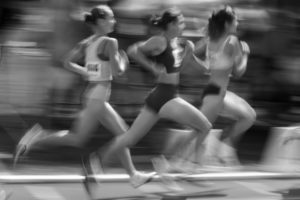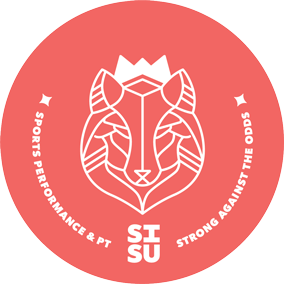Bone stress injury: Is it only overtraining?

A while back, I was working with a female runner who had a history of bone stress injury (BSI), or more commonly known as stress fracture.
BSIs in runners might result when a person’s skeleton fails to withstand the repetitive and sub-maximal forces of running.[1]
Wolff’s Law tells us that healthy bone will adapt under the loads to which it is placed and if loading on a particular bone increases, the bone will remodel over time and become stronger to tolerating those particular loads.
Under the pretense of Wolff’s law, one might deduce that as long as your bones are healthy (key word here…healthy), they’ll adapt to the stressors you place on them and even become stronger.
We find this to be largely true in many different types of athletes. With evidence indicating that athletes involved in more high impact sports, such as soccer, tend to have more robust bone. [2,3]

So, when I asked this female runner why she thought she sustained a stress fracture and she replied “overtraining,” I knew that there was likely more to the puzzle that needed to be addressed.
“Blaming overtraining for BSI is like focusing on a single petal when there is an entire flower in front of you.”
Without question, the most common response that I get from my female clients about why they believe they have sustained a stress fracture, is “overtraining.” And while overtraining can certainly create problematic environments, overtraining is not exactly the reason why stress fractures occur, because as it turns out, these things almost never happen in isolation.
Stress Fracture Risk
There seem to be two main categories of risk factors as it pertains to BSIs:
-
Biological risk factors and
-
Biomechanical risk factors
Biological risk factors include things like: being female, genetics, certain medications, the female athlete triad/relative energy deficiency in sport (RED-S), insufficient calcium or vitamin D. These are things based on your biology. Some of which you can change (like energy deficiency), some of which you can’t, (like being female). [1]

The biomechanical risk factors include things like: training patterns, bone characteristics and anatomical considerations such as leg length. [1]

What I want to be clear on here, is that blaming overtraining alone for BSI is like focusing on a single petal when there is an entire flower in front of you. And that flower requires certain variables to stay healthy and strong; such as water, sunlight and good soil.
To carry this metaphor forward, you (the runner), are the flower, and to maintain a healthy environment internally, so that you can withstand physical stressors, you will require water (food), sunlight (vitamin D and calcium), soil (a stable training base and sleep) and neighboring flowers (teammates/friends/coaches/positive influences) to help keep you healthy.
So let’s get something straight here, biological and biomechanical risk factors only capture a small window into an athlete’s situation and it is important not forget two very important pieces to the holistic athlete puzzle: psychological and social risk factors.
Body Image
Female runners have been dealt a more challenging hand when it comes to BSI risk because of cultural and social pressures/conditioning that lead females towards never feeling satisfied with their body. And as it pertains to the running community, to be constantly striving for leanness to foster performance improvements, but it comes at a cost.

We know that women and girls deal with body image and restricting eating behaviors, and as it pertains to sport, restricting fuel intake (food), is like starving a flower of water on a sunny day. It makes it difficult for the athlete to thrive, perform well and become susceptible to a slew of injury risk.
Meanwhile, the psychological and social risk factors get largely ignored while she is told she is injured because she’s running too much and because she’s a female. What a load of shit.
Speaking simply, prevention AND performance come down to creating a high functioning internal environment, that is able to withstand the stressors of sport and adapt efficiently and effectively to those stressors.
For female runners this highlights the importance of fueling appropriately as the volume of your running increases. Without appropriate fueling strategies as a baseline, your body may begin to shut down in other ways, predisposing you to BSI risk.
Some of the first early signs of trouble for females can include things like changes to her menstrual cycle (including a loss of her menses completely), low energy availability, feeling run down, depression, decreased performance, or even irritability. [4]
In summary, reducing risk for BSI and improving performance in female athletes is complex and nuanced, but boiling it down to overtraining alone, oversimplifies and diminishes some very important issues that female athletes currently face in our society. Including psychological and social conditioning that tells her she isn’t enough.
Finding a provider or coach that will be cognizant of all the variables involved is critical towards maintaining a healthy environment for an athlete to thrive.

Cheers,
Dr. Ellie Somers
Physio on a mission
Head SHE Wolf
References
1. Tenforde AS, Kraus E, Fredericson M. Bone Stress Injuries in Runners. Phys Med Rehabil Clin N Am. 2016;27: 139–149.
2. Tenforde AS, Sainani KL, Carter Sayres L, Milgrom C, Fredericson M. Participation in ball sports may represent a prehabilitation strategy to prevent future stress fractures and promote bone health in young athletes. PM R. 2015;7: 222–225.
3. Tenforde AS, Fredericson M. Influence of Sports Participation on Bone Health in the Young Athlete: A Review of the Literature [Internet]. PM&R. 2011. pp. 861–867. doi:10.1016/j.pmrj.2011.05.019
4. Mountjoy M, Sundgot-Borgen JK, Burke LM, Ackerman KE, Blauwet C, Constantini N, et al. IOC consensus statement on relative energy deficiency in sport (RED-S): 2018 update. Br J Sports Med. 2018;52: 687–697.
Sisu Sports Performance & PT is accepting new clients!! Feel free to send me an email or schedule an appointment today!





